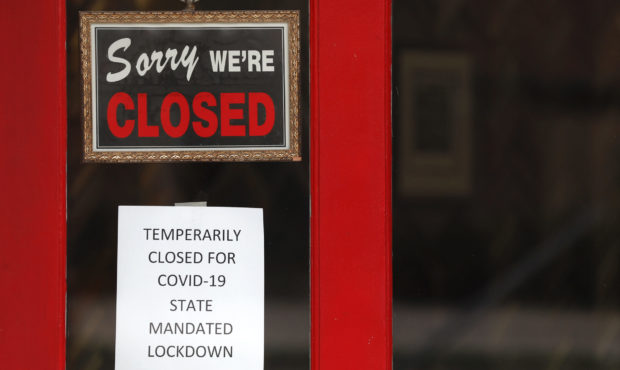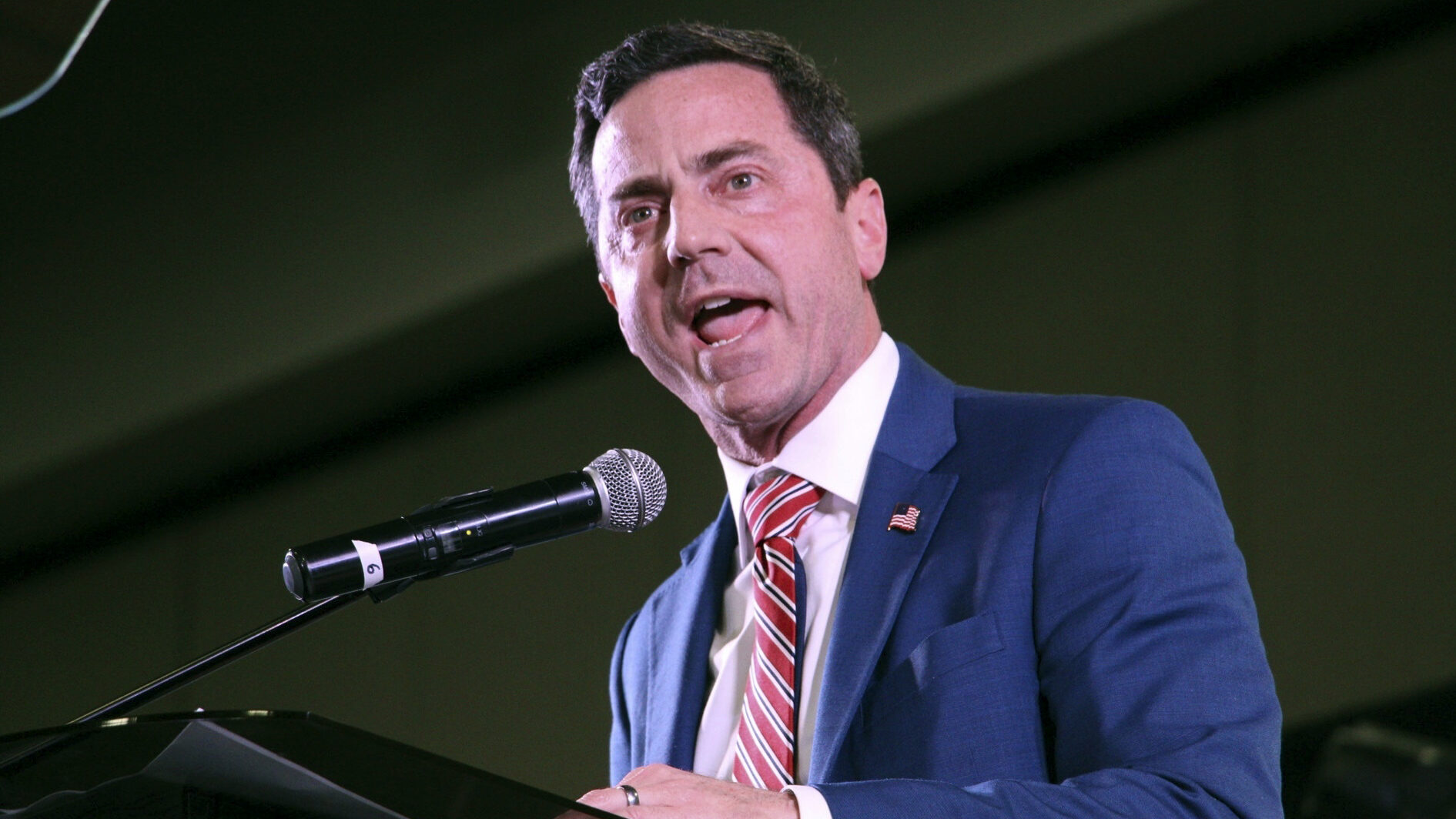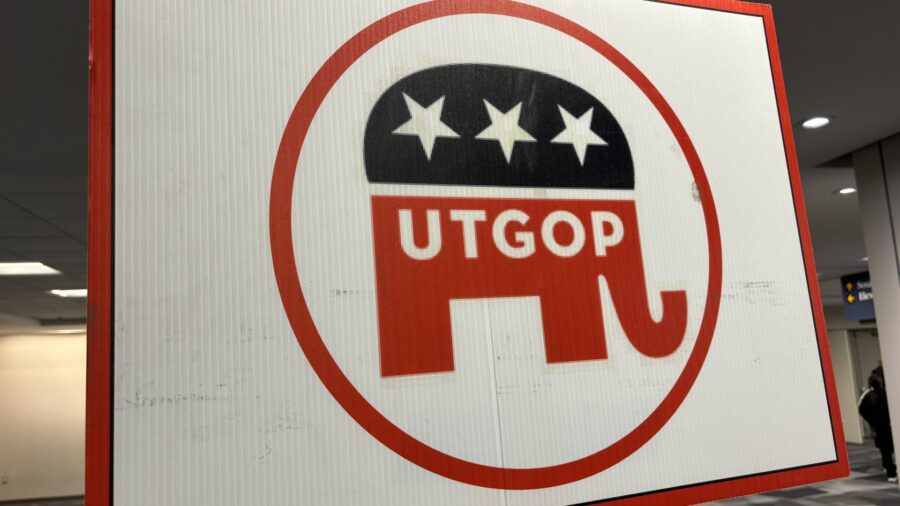Utah’s economy projected to bounce back, but not fully unless women return to workforce
Jan 18, 2021, 5:32 PM

FILE A sign in the widow of The Framing Gallery shows they are closed due to the new coronavirus COVID-19 pandemic, in Grosse Pointe, Mich., Thursday, May 7, 2020. The U.S. government is poised to report the worst set of job numbers since record-keeping began in 1948, a stunning snapshot of the toll the coronavirus has taken on a now-shattered economy. (AP Photo/Paul Sancya)
(AP Photo/Paul Sancya)
SALT LAKE CITY — Utah’s economy, like the rest of the nation, took a heavy toll because of the COVID-19 pandemic. Millions of Americans lost their jobs, businesses and financial stability since the pandemic began in March 2020. One group of the workforce was hit particularly hard: Women.
Prior to the pandemic, Natalie Gochnour, director of the Kem C. Gardner Policy Institute at the University of Utah, said the U.S. and Utah were experiencing the longest economic expansion in history. However, that all changed when a public health crisis emerged.
The mass exodus of women in the workforce — who were laid off, furloughed, or voluntarily resigned because of parental responsibilities — triggered what economists call the “pink collar recession.”
An economic report compiled by the policy institute indicates Utah’s economy is expected to rebound in 2021, but it’ll be impossible for the state to make a full recovery if women are unable to re-enter the workforce.
“This pink collar recession, with many women dropping out of the workforce to raise and school their children, will be an obstacle we must overcome for the Utah economy to fully recover,” Gochnour predicted.
Women in Utah’s workforce hindered by the pandemic
While the U.S. economy slowly recovers as a result of the pandemic, Gochnour said the U.S. will remember the nationwide recession for its debilitating effect on women.
“The COVID recession will go down as a pink collar recession impacting women at a higher degree than men,” Gochnour said.
There are two reasons for this, according to Gochnour. First, the majority of industries forced to shutter over health concerns are employed mostly by women.
“The occupations that have been the hardest hit are dominated by women,” Gochnour said. “Hotel service workers, travel and tourism workers, flight attendants, waitresses, restaurants. These are all occupations dominated by women and they’ve been contracting.”
About 450 Utah restaurants have permanently closed their doors because they were unable to sustain the economic strain.
The second reason women are ditching their job is because of other responsibilities.
“There are occupations that women hold that haven’t lost jobs, but they’ve been very stressed,” said Gochnour, specifically pinpointing nurses and teachers. “These women are providing more help in the home, whether it’s the closure of childcare options [for example]. So women at home having even more responsibilities with their children and having to homeschool.”
“This combination of these labor market effects and these home impacts have created a very difficult challenging time for women,” she added.
Utah’s economy relies on women
Despite popular belief, Gochnour said women make up the majority of Utah’s labor force. That’s due to Utah’s large family sizes and because a good portion of the labor force is young females, according to Gochnour.
But the percentage of working women started to sharply decline as the pandemic continued.
“As the pandemic raged on, more and more women dropped out of the labor force, either to homeschool their kids, or because of childcare needs, or because they got laid off because of the occupations that they were in,” Gochnour said.
Utah has the youngest population in the nation, along with the highest population of people enrolled in the public school system. If women don’t transition back into the workplace, Utah’s economy will struggle to recover in the long run.
“The reason I don’t think the economy can fully recover until we get through this pink collar recession is that women have to recover from the fact that they’ve lost ground in the labor market,” Gochnour said.
Bringing women back to work
Gochnour put it bluntly: Women won’t reintegrate back into the workforce unless there’s enough support. A first step is re-opening schools so women don’t stretch themselves so thin.
“A prerequisite for women to regain their footing economically is for schools to be fully open in the classroom,” Gochnour said. Once students are back at school instead of learning from home, women will have more opportunities to go back to work.
There isn’t one right answer to support women re-entering the labor market either. Gochnour said there are a plethora of ways the state, employers and families can aid this transition.
“It’s support for childcare expenditures, it’s support for education, more counselors, more teachers, more nurses,” Gochnour outlined. “And certainly, men have a big role to play. They can share these family responsibilities at a greater level.”
Additionally, it’s important to know economists like Gochnour don’t expect the economy to look the way it did pre-pandemic.
“The economy will be different coming out of COVID than it was going in,” Gochnour said. “We don’t return to where we were, but rather there are structural changes that are occurring, and it’s a different economy as we come out.”
Even though a lot of positions women held prior to the pink collar recession might not resurface post-pandemic, Goucher believes this gives women an opportunity to enter labor forces they wouldn’t normally participate in.
“[It’s] a real signal to women that are in these occupations that have been hard hit, to retrain, and to be put in a situation where you have additional marketable skills that are more stable and more demand in this new and different economy,” Goucher said.
Supporting women in new career endeavors
While a women’s job may no longer exist when she returns to the workforce, Goucher indicates there are resources for women looking to explore a new market and get back in a financially stable position, including additional stimulus money.
However, Goucher said the government must allocate stimulus money to the individuals hurting the most, including women.
This includes “targeted grant programs to help businesses, rental and mortgage assistance,” Goucher said. “It makes it so the women can be out working.”
Economists believe America’s economic recovery will resemble a ‘K’ shape, meaning some people will come out on top and others will be at the bottom. As of now, women are projected to come out of the pandemic on the bottom.
“What we’ve got to do is get that ‘K’ to recover so that everybody recovers from this very challenging time,” Goucher said.













